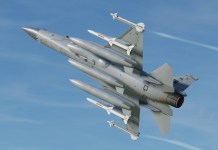The Philippines and the US on Monday launched a two-week joint military exercise, according to reports. This comes at a time when the American and Chinese navies have amassed an unusual number of warships in the South China Sea in what appears to be a preparation for a bigger confrontation.
According to Nikkei Asia, the annual Balikatan (shoulder-to-shoulder) exercises, which were canceled last year due to the COVID-19 pandemic, will involve 960 US and Philippine troops, a scaled-down version of previous drills to comply with health protocols.
The joint war games that will include maritime security training come amid the US-China tensions which escalated late last week when China’s aircraft carrier Liaoning maneuvered through Japan’s Miyako straits sailing south towards the Pacific.
The Japanese Maritime Self Defense Force (JMSDF) reported the movement of Liaoning, escorted by 5 other warships- namely a Type 055 class stealth guided-missile destroyer Nanchang, two Type 052D destroyers Chengdu and Taiyuan, the Type 054A frigate Huanggang and the Type 901 comprehensive supply ship Hulunhu.
The Japanese and American forces dispatched their own warships and surveillance aircraft to chase the Chinese fleet.
At the same time, Beijing flexed its muscles in the Philippine waters as Chinese vessels swarmed near the Filipino coast. This also led to heated diplomatic arguments from either side. Last weekend, it was also reported that PLAN’s Type 022 missile boats harassed a Philippine news crew who were sailing to the Second Thomas Shoal.
.@USPacificFleet Theodore Roosevelt Carrier Strike Group and the Makin Island Amphibious Ready Group conduct expeditionary strike force operations in the South China Sea. #FreeandOpenIndoPacific pic.twitter.com/APWZIA3O3B
— U.S. Indo-Pacific Command (@INDOPACOM) April 10, 2021
The Biden administration has reiterated Washington’s stance against Chinese aggression and the latest move is aimed at defending the Philippines’ territorial claim in the region.
“An armed attack against the Philippines’ armed forces, public vessels, or aircraft in the Pacific, including in the South China Sea, will trigger our obligations under the US-Philippines Mutual Defense Treaty,” US State Department spokesman Ned Price said.
This pacific deployment is particularly special as the US Navy’s Nimitz Class supercarrier USS Theodore Roosevelt, accompanied by F-35 equipped Wasp-class amphibious assault ship USS Makin Island is already conducting freedom of navigation operations in the region.
A striking shot taken by US Navy Cmdr. Robert J. Briggs and Cmdr. Richard D. Slye as they monitored the Liaoning was also put up by the US Navy, depicting the proximity of the Chinese CSG from the USS Mustin.
The Theodore Roosevelt Carrier Strike Group consists of the USS Theodore Roosevelt (CVN 71), Carrier Air Wing (CVW) 11, the Ticonderoga-class guided-missile cruiser USS Bunker Hill (CG 52), Destroyer Squadron 23, and the Arleigh Burke-class guided-missile destroyer USS Russell (DDG 59).
The USS Makin Island’s group also consisted of amphibious assault ships the USS Somerset and USS San Diego, and the ships were involved in a coordinated exercise in the South China Sea.
According to the Chinese state media Global Times, the deployment of Liaoning was done against the ‘provocative exercises’ conducted by American carriers, as tensions between China and the US continue to rise over the island of Taiwan, with the US loosening restrictions on government engagement with the island. This gathering of a large number of rival warships at the same time in close proximity is seen as an unusual event by security & defense analysts.
The military threat emerging from the West Pacific has made all the regional militaries anxious, particularly with Beijing’s aggressive policies. “Similar instances will just take place increasingly more often with China’s future aircraft carrier development program,” a Chinese military analyst told the Global Times on Sunday.
The analyst also said that as the PLA’s second aircraft carrier Shandong gradually gains operational capability, China will have a carrier sailing in the South China Sea very often in addition to occasional exercises conducted by the Liaoning, which is home-ported further away than the former.
Follow EurAsian Times on Google News




